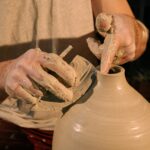Do you ever feel like words just aren’t enough to express how you’re feeling? Or maybe you struggle with finding the right words altogether. If this sounds familiar, then art therapy may be just what you need! Art therapy is a unique form of therapy that combines creativity and self-expression to help individuals heal from trauma, reduce stress, and improve mental health. In this blog post, we’ll explore the benefits of art therapy and how it can help unleash your inner artist while also promoting emotional wellbeing. So grab some paper and pencils because it’s time to let your creativity flow!
Introduction to Art Therapy
Art therapy is a form of psychotherapy that uses art-making as a primary mode of expression and communication. The process of creating art can be used to help people explore their feelings, thoughts, and experiences. Art therapy can be an effective treatment for a wide range of mental health conditions, including anxiety, depression, trauma, and addiction.
In art therapy, clients are typically asked to create a piece of artwork based on a prompt or theme. The therapist then uses the artwork to facilitate discussion and help the client explore emotions or thoughts related to the artwork. Art therapists are trained in both art and psychology, and they use their knowledge of human development and psychological principles to guide clients in their healing process.
Art therapy can be beneficial for people of all ages and backgrounds. It is an accessible form of therapy that does not require any prior experience or knowledge of art. Whether you are an experienced artist or have never picked up a paintbrush before, art therapy can be a helpful way to explore your inner thoughts and emotions.
Benefits of Art Therapy
Art therapy is a form of psychotherapy that uses art materials as a means of communication between the therapist and patient. It can be used to treat a wide range of mental and emotional disorders, including anxiety, depression, trauma, and addiction. Art therapy can also be used to improve self-esteem, reduce stress, and increase coping skills.
Some of the benefits of art therapy include:
1. Art therapy can help to reduce stress and anxiety.
2. It can help to improve self-esteem and body image.
3. Art therapy can help to increase coping skills and resilience.
4. It can help to promote creativity and self-expression.
5. Art therapy can help to foster social connections and build meaningful relationships.
Processes Involved in Art Therapy
Art therapy is a process that uses the creation of art to improve mental, physical, and emotional well-being. The process can be used to address a wide variety of issues, including anxiety, stress, depression, trauma, and addiction. Art therapy can be an effective treatment for people of all ages, including children and adolescents.
The process of art therapy typically begins with a therapist assessing the individual’s needs and goals. Once the therapist has a better understanding of what the individual is hoping to achieve through art therapy, they will help them select appropriate materials and techniques. The therapist will then provide guidance and support as the individual creates their artwork.
Art therapy sessions usually last for 45-60 minutes, although some may be shorter or longer depending on the individual’s needs. After the artwork is completed, the therapist will help the individual reflect on their experience and what they have created. This reflection can be done verbally or through written journaling. It is through this reflection that individuals can begin to gain insights into their thoughts and feelings.
Different Forms and Techniques of Art Therapy
Art therapy is a form of psychotherapy that uses art-making to help people express their emotions and explore their thoughts and feelings. Art therapy can also be used to help people with physical health conditions, such as chronic pain or cancer.
There are many different forms and techniques of art therapy, such as painting, drawing, sculpture, collage, and mixed media. Art therapists may also use drama, music, and dance in their practice. The goal of art therapy is to help people access their inner thoughts and feelings and to use creative self-expression to promote healing and growth.
How to Get Started with Art Therapy
Here are a few tips:
1. Find a qualified art therapist. This is someone who has completed specialized training in art therapy and is qualified to provide therapeutic services. You can find a list of qualified therapists on the American Art Therapy Association’s website.
2. Consider what type of art making you’re interested in. There are many different mediums you can use for art therapy, including painting, drawing, sculpture, collage, and mixed media. Think about what type of art making appeals to you and would be therapeutic for you.
3. Set some goals for your art therapy experience. What do you hope to accomplish through art therapy? Whether it’s healing from trauma or managing anxiety, setting some specific goals will help guide your experience.
4. Be patient with yourself. The process of creating can be therapeutic in itself, but it may take some time to see results from your efforts. Trust the process and give yourself permission to create without expectations.
Encouraging Self-Expression Through Art
Art therapy is a form of psychotherapy that uses artmaking to help people express themselves and explore their emotions. It is based on the idea that the creative process can be therapeutic and that through art, people can gain insight into themselves and their problems.
Art therapy can be used with people of all ages, from children to adults. It can be helpful for people who have trouble communicating their thoughts and feelings, or who are struggling with mental health issues, trauma, or chronic illness.
While art therapy may involve making art, it is not about being an artist or creating “perfect” artwork. The focus is on the process of creating, not on the end product. anyone can benefit from art therapy, regardless of their artistic ability.
There are many different ways to do art therapy. Some therapists use traditional art materials such as paints and clay, while others may use more unconventional materials such as sand or found objects. Therapists may also use music, dance, drama, or any other form of expression that allows the client to express themselves creatively.
The goal of art therapy is to help clients explore their emotions and experiences in a safe and supportive environment. Through artmaking, clients can learn about themselves and develop new skills for coping with difficult situations.
Conclusion
All in all, art therapy is a powerful and effective way to work through emotional issues, reduce stress levels, and express oneself creatively. It can provide an outlet for creative expression that can help individuals better understand their emotions and develop healthier coping skills. Art therapy also provides the opportunity to find joy in the act of creating something with your own hands. So if you are looking for a way to explore new perspectives on life or just want to take some time out from your daily stresses, consider trying art therapy – you never know what kind of healing power it might have!










